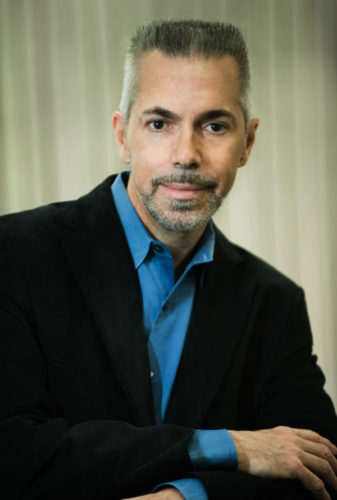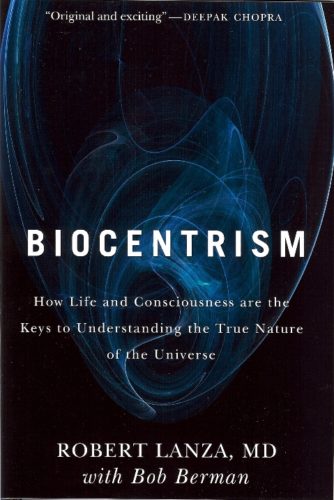A cover story on Robert Lanza in U.S. News and World Report summarized his remarkable life with these words:“[He] is the living embodiment of the character played by Matt Damon in the movie ‘Good Will Hunting.’ Growing up underprivileged in Stoughton, Mass., south of Boston, the young preteen caught the attention of Harvard Medical School researchers when he showed up on the university steps having successfully altered the genetics of chickens in his basement. Over the next decade, he was ‘discovered’ and taken under the wing of scientific giants such as psychologist B.F. Skinner, immunologist Jonas Salk, and heart transplant pioneer Christiaan Barnard. His mentors described him as a ‘genius,’ a ‘renegade thinker,’ even likening him to Einstein.”
The full potential of this renegade genius began to shine through his already formidable scientific achievements as a stem cell researcher with the publication of his article, “A New Theory of the Universe,” in 2007. In that trailblazing essay, Lanza outlined the principles that would anchor Biocentrism, a book that Nyogen Roshi describes as mirroring his experiences in the practice of zazen as closely as anything he has encountered in a modern writer.
 Lanza is in the early stages of a project that aims to regenerate damaged optic nerves from specially designed lines of stem cells—a collaborative undertaking that introduced him to Hazy Moon sangha member Ralph Shikan Levinson, a professor of ophthalmology at UCLA. Through that association Lanza learned of his small but enthusiastic fan base at the Hazy Moon and graciously agreed to respond to some questions about his work.
Lanza is in the early stages of a project that aims to regenerate damaged optic nerves from specially designed lines of stem cells—a collaborative undertaking that introduced him to Hazy Moon sangha member Ralph Shikan Levinson, a professor of ophthalmology at UCLA. Through that association Lanza learned of his small but enthusiastic fan base at the Hazy Moon and graciously agreed to respond to some questions about his work.
HM: Do you engage in any sort of spiritual practice? If so, can you tell us a bit about your practice and how it figures into your daily life?
RL: No, but my whole life has essentially been one long spiritual search, and a search not limited to the pipettes and black-steel microscopes of my visible profession. Where did it all come from? Why does the universe exist? Why am I here? As a child (I was raised Catholic) I found myself playing on the center of God’s stage; from some hidden celestial vantage point, so I thought, I was being scrutinized and watched by the Supreme Creator, perhaps almost as narrowly as I, as a medical student with a microscope, would one day scrutinize the cells growing in a petri dish. If, indeed, God had made the world, then who made God? This was long ago, before I had seen micrographs of DNA, or the tracks of matter and antimatter created in a bubble chamber by the collision of high-energy particles. But as I became engaged upon the task of squeezing 300 years of scientific achievement into a few convolutions of brain tissue, I began to ask—in my new sophistication—less naive questions: If, indeed, the universe exists because of the laws of nature, then who created those laws? And if the universe arose from the Big Bang, then what happened before it? After 20 years of formal education, I had succeeded in performing a kind of exorcism—I had replaced a deep religious mystery with, well, a deep scientific mystery. Science, instructive though it was, had merely put back the problem of origins by a step. The extent of the dilemma was exemplified in an apocryphal story told by Carl Sagan: a Westerner asks an Eastern philosopher to describe the nature of the world:
“It is a great ball resting on the flat back of the world turtle.”
“Ah yes, but what does the world turtle stand on?”
“On the back of a still larger turtle.”
“Yes, but what does it stand on?”
“A very perceptive question. But it’s no use, mister; it’s turtles all the way down.”
I came away from university thinking the world had become less rational, not more, and that there was little difference between ultimate religious-philosophical ideas and ultimate scientific ideas. The colors differ, this is true. In one age we believe the world is a great ball resting on the back of a turtle; in the next, a universe that just popped into existence, hot and expanding, out of nowhere. In one age angels push and pummel the planets about; in the following time everything is a meaningless accident. We exchange a world turtle in one era for a Big Bang in another. Certainly, I thought, we can do better than this—thus, biocentrism.
 You do a great job of describing the limits of classical materialism in Biocentrism, but you’re also a classically trained scientist who works in a field where traditional scientific methods and techniques presumably dominate the culture. How do the insights you describe in the book shape your work as a scientist, and what (if any) limits have you encountered as a scientist with a biocentric view of the world?
You do a great job of describing the limits of classical materialism in Biocentrism, but you’re also a classically trained scientist who works in a field where traditional scientific methods and techniques presumably dominate the culture. How do the insights you describe in the book shape your work as a scientist, and what (if any) limits have you encountered as a scientist with a biocentric view of the world?
Most scientists are focused on details, for instance: How does this or that particle or enzyme work? Science is amazingly good at this. However, it does badly in just one area, which unfortunately encompasses all the bottom-line issues: What is the nature of this thing we call reality, the universe as a whole? The reason for this is simple: scientists are human beings with the same preconceptions and prejudices as everyone else. Unfortunately, their preoccupation with physical theories of everything is a wrong turn from the purpose of science—to question everything relentlessly and not to worship what Bacon called “The Idols of the Mind” as the ultimate reality. Modern science has become like Swift’s Kingdom of Laputa, flying absurdly on an island above the earth and indifferent to the world beneath. When science tries to resolve its conflicts by adding and subtracting dimensions to the Universe like houses on a Monopoly board, we need to look at our dogmas and recognize how the cracks in the system are just the points that let the light shine more directly on the mystery of life. Scientists have failed to protect science against speculative extensions of nature. The “ether” of the 19th century; the “space-time” of Einstein; the “string theory” of the new millennium—with new dimensions blowing up in different realms, and not only strings but “bubbles” shimmering down the byways of the universe—are examples of this speculation. Indeed, unseen dimensions (up to a 100 in some theories) are now envisioned everywhere, some curled up like soda-straws at every point in space. The root of this insanity is always the same—the attempt by physicists to overstep the legitimate boundaries of science. The answers to the questions they lust after are bound up with issues of life and consciousness. Physics can furnish no true answers for them. We need to return to the science of life because without understanding life, we have no way to understanding the universe. As a scientist, I will continue to challenge the physicists’ facile ideas about the reality of space and time.
Your advocacy for Biocentrism—particularly your collaboration with Deepak Chopra—has won lots of fans but also attracted some harsh criticism. Why do you think the ideas at the heart of the book sometimes prompt such a strong averse reaction?
Biocentrism is an out-and-out challenge to physics, indeed our entire view of the world. However, the harsh reaction occurs because biocentrism is a proposal for a paradigm shift. Arthur Schopenhauer explained it best: “All truth passes through three stages. First, it is ridiculed. Second, it is violently opposed. Third, it is accepted as being self-evident.” That being said, I’ve gotten dozens of emails from people, from professors —and even from Chairmen of scientific departments at places like Johns Hopkins University and Columbia—saying they think I’m “right on.”
As you might guess, at a Zen center you won’t find too many people who will object to the propositions that our individual perceptions create multiple realities and that all of these universes arise from consciousness (or awareness). But given those givens, what then? How are we transformed by a biocentric view of the world? What changes have you seen in your own life as a consequence of the experiences and insights you describe in the book?
I’m at peace with myself and the universe. One can’t but come closer to God or Heaven than to merge oneself with the universal order of things—to become, as it were, one with all of space and time. “If,” wrote Ralph WaldoEmerson, “we measure our individual forces against hers [nature’s], we may easily feel as if we were the sport of an insuperable destiny. But if, instead of identifying ourselves with the work, we feel that the soul of the workman streams through us, we shall find the peace of the morning dwelling first in our hearts, and the fathomless powers of gravity and chemistry, and, over them, of life, pre-existing within us in their highest form.”
What ultimately motivates you to do the work you do?
In Francis Ford Coppola’s movie “Peggy Sue Got Married,” Peggy Sue (Kathleen Turner) collapses at her 25th-year high school reunion. She’s transported back to the days of her senior year in high school, where she takes a trip out to the countryside to visit her long-dead grandmother: “Peggy Sue,” her grandmother says, “right now you’re just browsing through time. Choose the things you’ll be proud of, the things that last…” I try to do that. I try to do whatever I can to help alleviate human suffering and to make the world a better place. I live my life according to humanistic—or better yet, biocentric—values and principles, with special attention to the small details that make us all human.
Read a review of Biocentrism.
